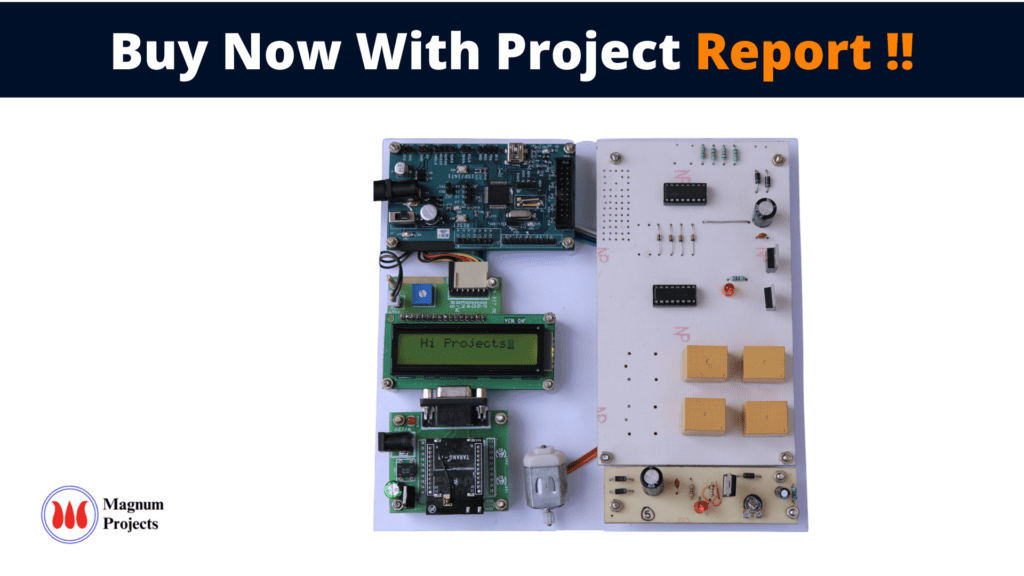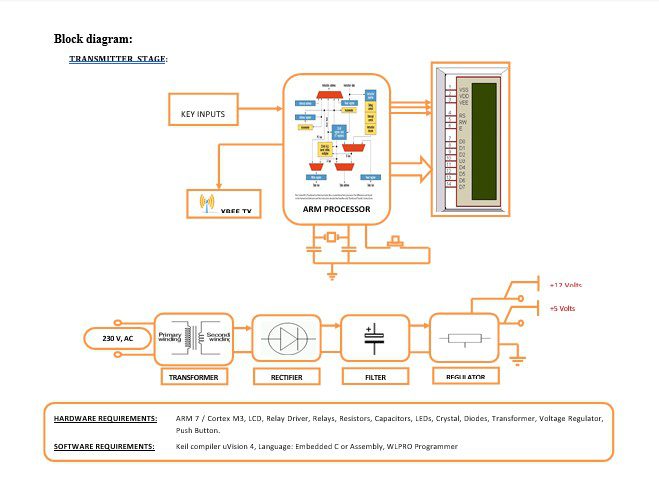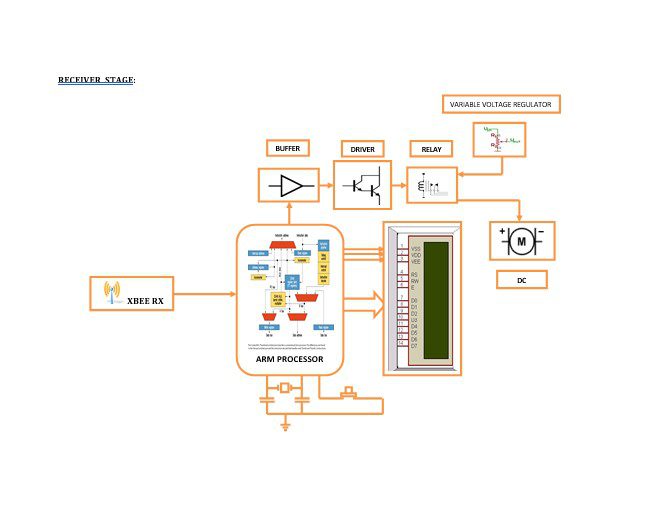Table of Contents
Introduction:


ZigBee is a new technology now being deployed. A key input (Switch) is an infrastructure comprised of sensing, computing, and communications elements that allows the administrator to instrument, observe, and react to events and phenomena in a specified environment. In this system point to point, communication is established with ZigBee connectivity for DC motor speed control.
This system presents the implementation of a key input to control the speed of a DC motor from a remote location. Feedback to measure the current speed is set up using Infra-Red Sensor and fed to ARM7 Microcontroller directly. The conventional setup uses a frequency-to-voltage converter to find the speed whereas a new technique is used to calculate the speed from the IR sensor output without using frequency to voltage converter. The motor is controlled remotely with a ±5 rpm tolerance.




Block diagram explanation :
Power supply unit:
This section needs two voltages viz., +12 V & +5 V, as working voltages. Hence specially designed power supply is constructed to get regulated power supplies.
Zigbee technology:
ZigBee is the name of a specification for a suite of high-level communication protocols using small, low-power digital radios based on the IEEE 802.15.4 standard for wireless personal area networks (WPANs).
- A very low-cost, low power consumption two-way, wireless communication standard for automation, toys & PC peripherals.
- Low power consumption: 6 months to 5 years battery life for most applications.
- Low cost: At least half the cost of Bluetooth solutions.
- The high density of nodes per network: 250 nodes per network, multiple co-located networks.Data rate requirements: Few bits to 250kbps sufficient.
ARM processor:
ARM is a computer processor-based RISC architecture. A RISC-based computer design approach means ARM processors require significantly fewer transistors than typical processors in average computers. This approach reduces costs, heat, and power use. The low power consumption of ARM processors has made them very popular:
The ARM architecture (32-bit) is the most widely used in mobile devices, and the most popular 32-bit one in embedded systems.
ARM processor features include:
- Load/store architecture.
- An orthogonal instruction set.
- Mostly single-cycle execution.
- A 16×32-bit register
- Enhanced power-saving design.
Buffers:
Buffers do not affect the logical state of a digital signal (i.e. a logic 1 input results in a logic 1 output whereas logic 0 input results in a logic 0 output). Buffers are normally used to provide extra current drive at the output but can also be used to regularize the logic present at an interface.
Drivers:
This section is used to drive the relay where the output is the complement of input which is applied to the drive but the current will be amplified.
Relays:
It is an electromagnetic device that is used to drive the load connected across the relay and the o/p of the relay can be connected to the controller or load for further processing.
Methodology:
A general block diagram of the proposed scheme is given in Figure. The whole system is divided into two parts transmitter and receiver. In the transmitter part, a key input is provided to control the speed of the DC Motor present at the plant location. The pressed key input is simultaneously fed to the ARM7. This is transmitted efficiently and smoothly to the receiver end through wireless Zigbee Communication Protocol (IEEE802.15.4 Standards). The ARM7 at the transmitter end is so programmed that to identify the pressed key for the DC Motor to come out of the desired or safety limit, a signal will be generated by the ARM7. All the processors and controllers are interconnected through Zigbee. A 32-bit ARM Processor has been used to interface the IEEE 802.15.4 standard, ZigBee protocol
Advantages:
- Very low power consumption
- Reliable data transfer
- Secure
- Supports a large number of nodes
- Excellent performance in environments with low SNR
- Can be used globally
Disadvantages:
It increases the cost whereas digital systems reduce the cost of the system.
Applications:
- This project can be implemented in Military applications.
- This project can be implemented in Hospitals.
- This project can be implemented in the Automotive domain.




